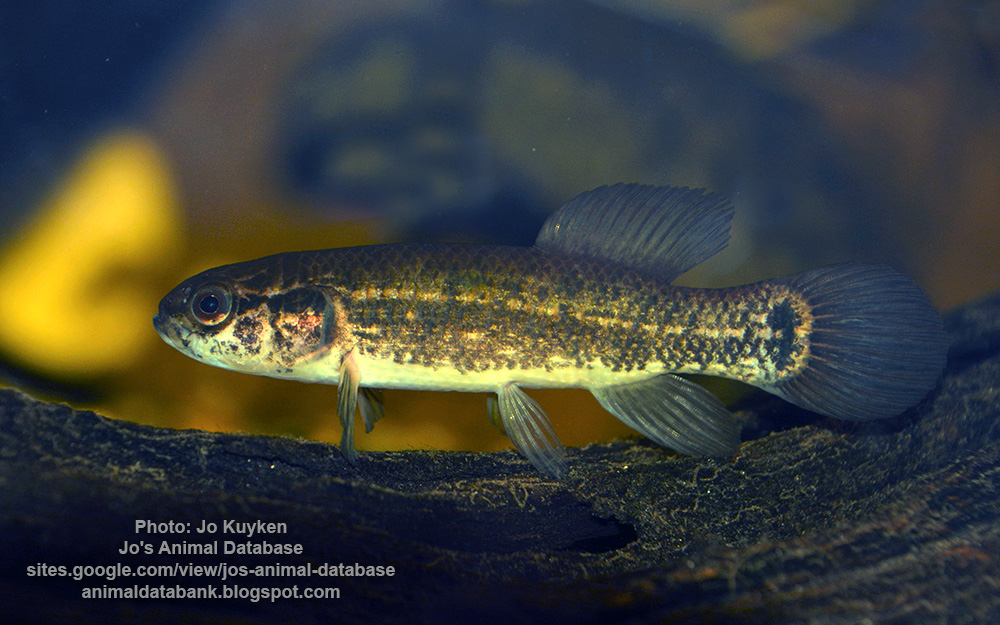Eastern mudminnow
(Umbra pygmaea)

Classification
General data
The eastern mudminnow (Umbra pygmaea) is a species of freshwater fish belonging to the family Umbridae. It is native to eastern North America, but has been introduced to Europe. It feeds primarily on insect larvae and other small aquatic invertebrates.
Description
It is an elongated, stout-bodied fish, brown or yellow-green in color, with about 10 or more dark, narrow, lateral stripes separated by pale spaces, although there is no lateral line on the fish. The pelvic fin lies somewhat farther back on the body, such that it rests below the dorsal fin. The body is elongated, and the maximum size of the fish is 15 cm (5.9 in).
Morphology
Dorsal spines (total): 0; Dorsal soft rays (total): 14-15; Anal spines: 0; Anal soft rays: 8 - 11. Body robust, thick, little compressed; head bluntly conic; snout short, equal to diameter of eye; mouth moderate, jaws short, mandible protrudes slightly beyond tip of upper jaw, premaxillaries not protractile. Gill rakers short and numerous. Dorsal inserted near pectoral than caudal base; pelvic inserted just before origin of dorsal , rays of depressed fin reaching to about 3rd anal ray. Caudal fin rounded, with 18-20 rays. Pigmentation: yellowish green with 10-12 narrow lateral dark stripes; a dark stripe through eye; a black basicaudal bar; lower jaw pale; fins plain.
Distribution and habitat
The native range of the eastern mudminnow is from New York to Florida, and found as west as Georgia. Atlantic and Gulf slopes from southeastern New York (including Long Island) to St.Johns River drainage in Florida and west to Aucilla River drainage in Florida and Georgia.
It has also been introduced to Europe, where it can be found in France, Belgium, Germany, the Netherlands, Denmark, and Poland.
It is generally found in still or slow-moving waters, often in dense vegetation, often over heavily vegetated streams, swamps, and ponds.
The eastern mudminnow has shown great adaptability to poor habitats with low pH, temperature, and presence of oxygen. At least one incident has been documented where an eastern mudminnow has survived an entire night out of water. The fish can be found in waters with a pH ranging from 3.5 to 8.1 in natural environments. The optimal pH for growth is 4.5, which is often detrimental or even fatal for most fish.
Diet
The eastern mudminnow are bottom-feeders and feed on insect larvae, worms, molluscs, and crustaceans.














